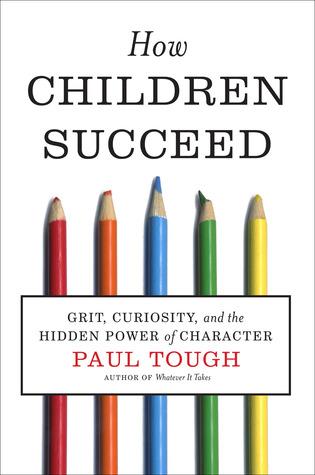 We’re reading How Children Succeed by Paul Tough. You’re welcome to join us whether or not you are participating in other activities related to the Back to School Reading Challenge.
We’re reading How Children Succeed by Paul Tough. You’re welcome to join us whether or not you are participating in other activities related to the Back to School Reading Challenge.
I know that at least a couple of people started reading this in the last week and, finally, so did I.
 I was fascinated by the first two topics.
I was fascinated by the first two topics.
At the Tools of the Mind schools, preschoolers’ development of reading and math abilities are a side effect of their real goals, “to help children learn a different kind of skill: controlling their impulses, staying focused on the task at hand, avoiding distractions and mental traps, managing their emotions, organizing their thoughts.” p. xii. This reminded me of our Read Along book in January: The Power of Habit — Group Read. I’m pretty sure that book had the famous delayed gratification marshmallow experiment plus the newer results that even small children can learn techniques for delaying gratification. And that learning those techniques can have far-reaching implications in their development.
The second topic was about Nobel Prize-winning economist James Heckman who turned his attention later in his career to a multi-disciplinary approach to childhood development. His research has refuted the notion that cognitive ability is the most important determinate of future success, and therefore the major purpose of schooling. Instead, it appears that psychological traits are more important. “Those traits — an inclination to persist at a boring and often unrewarding task; the ability to delay gratification; the tendency to follow through on a plan — also turned out to be valuable in college, in the workplace, and in life generally.” p. xix
Heckman’s research led him to reevaluate results of the Perry Preschool Project, a famous study that seemed to say that increased intervention in early years did not increase IQ scores. It didn’t, but it turned out that the people who received that intervention went on to do better in life in the long-term. Apparently, they relied on other skills that they learned alongside the cognitive abilities that they were being taught.
After two stories about preschools, I was a little worried that How Children Succeed was going to be all about early intervention and older students are just out of luck. I hate it when we give up on people that way. So, I was very pleased with the last story in the introduction about a student with many disadvantages who turned her life around in her sophomore year of high school. The questions that arise from that story are what I would like know the answers to:
So what happened? If you had met Kewauna on the first day of her sophomore year, you could have been forgiven for thinking that she had virtually no chance to succeed. Her destiny seemed sealed. But something in her changed. Was it really just one stern talk with her mom? Was that all it took? Was it her great-grandmother’s positive influence? The intervention of her Engish teacher? Or was ther something deep within her own character than inclined her toward the idea of hard work and success, despite all the obstacles she had faced and the mistakes she had made? p. xxiii
Are you reading How Children Succeed by Paul Tough? What have you learned so far? Answer in the comments or submit a post to the link list below.
